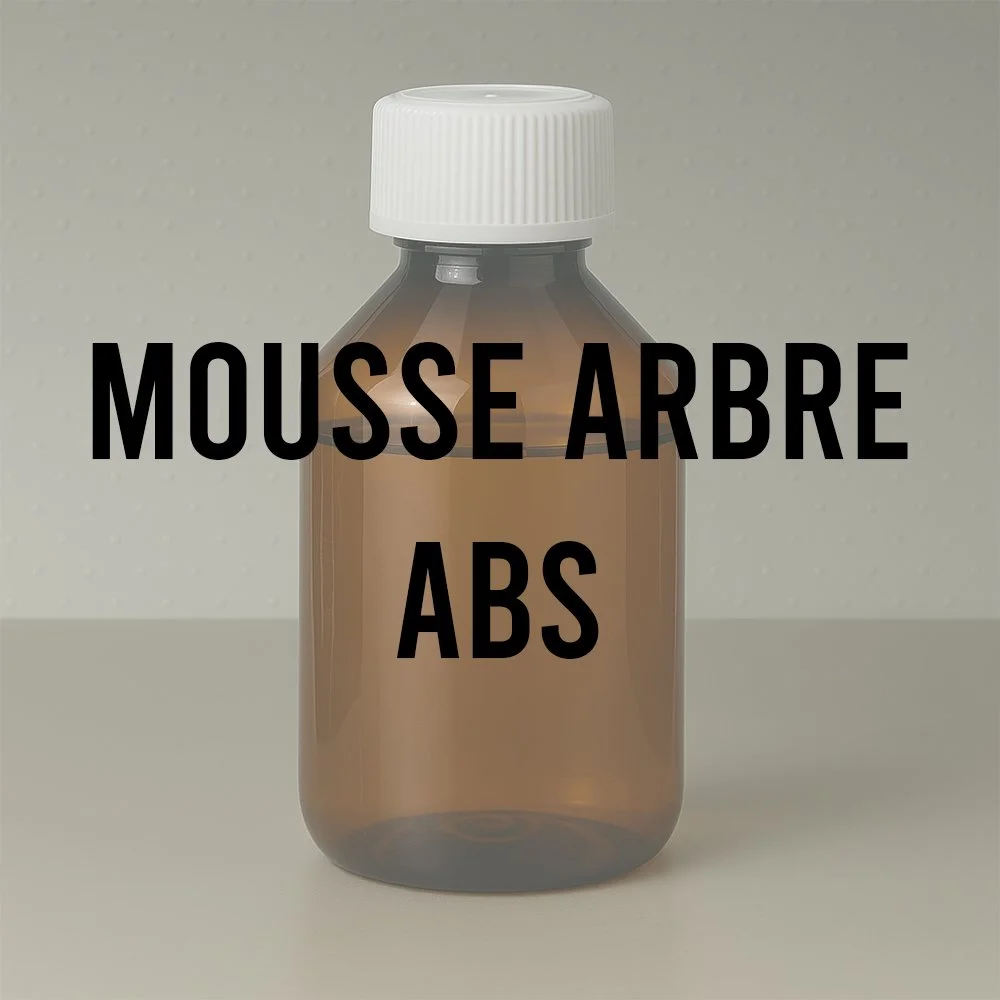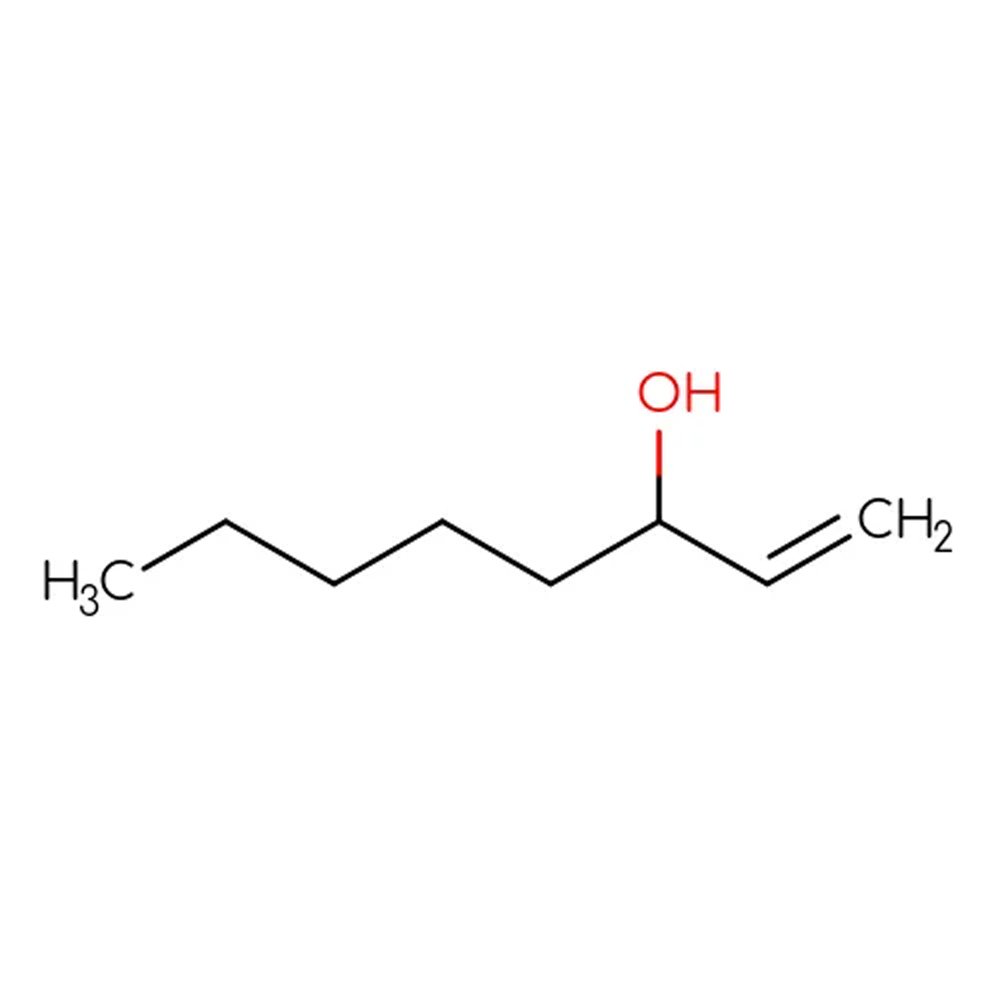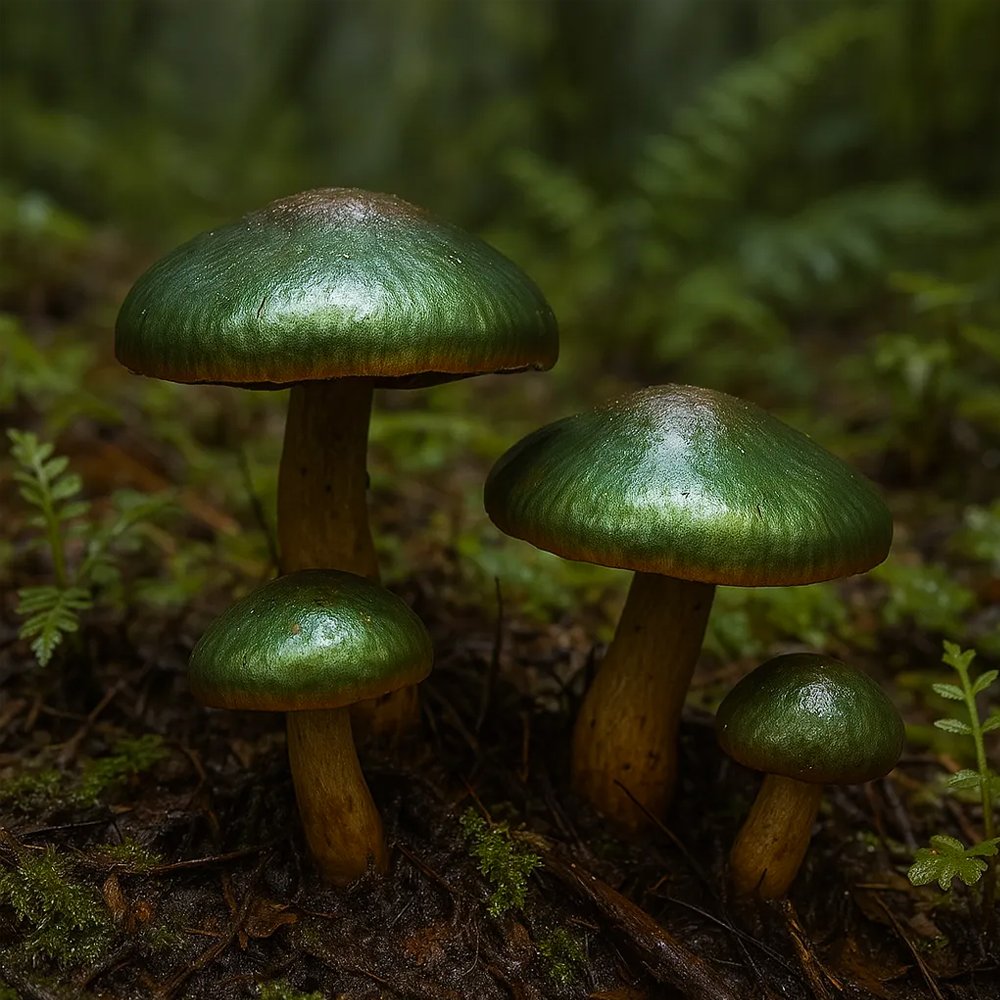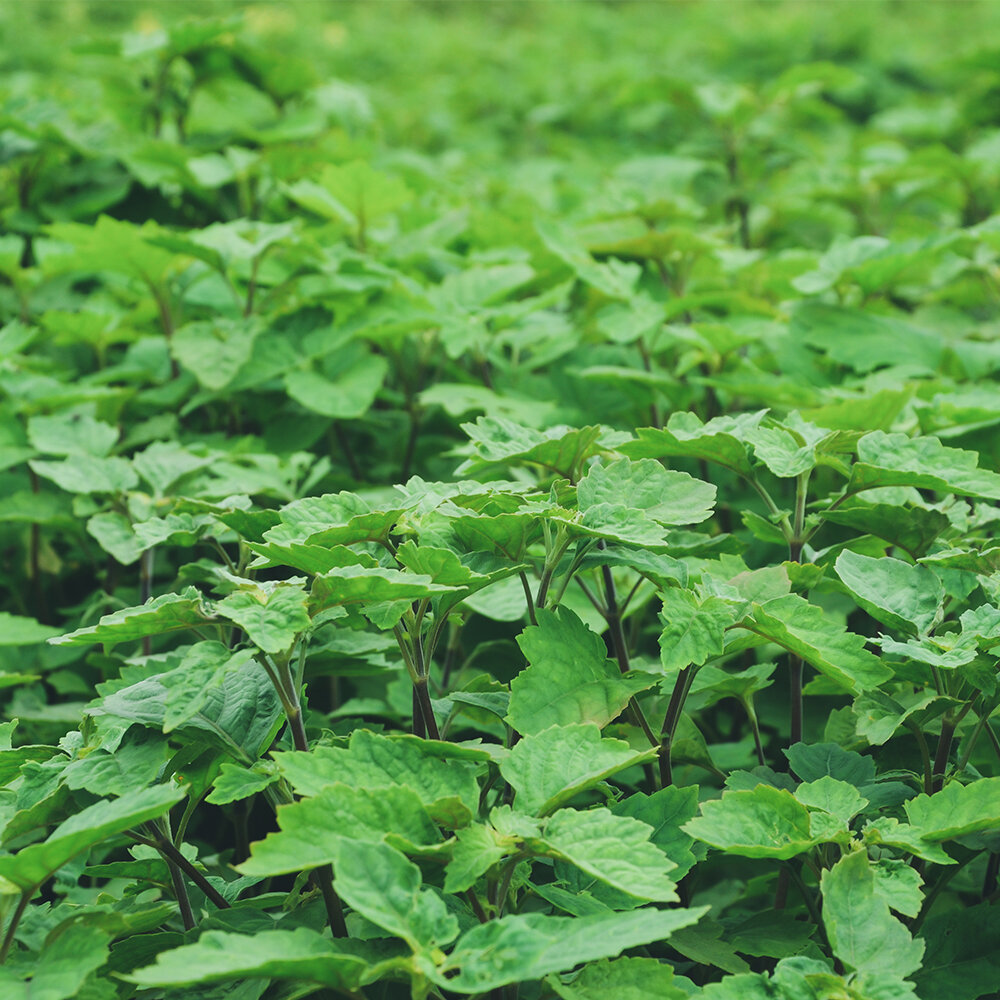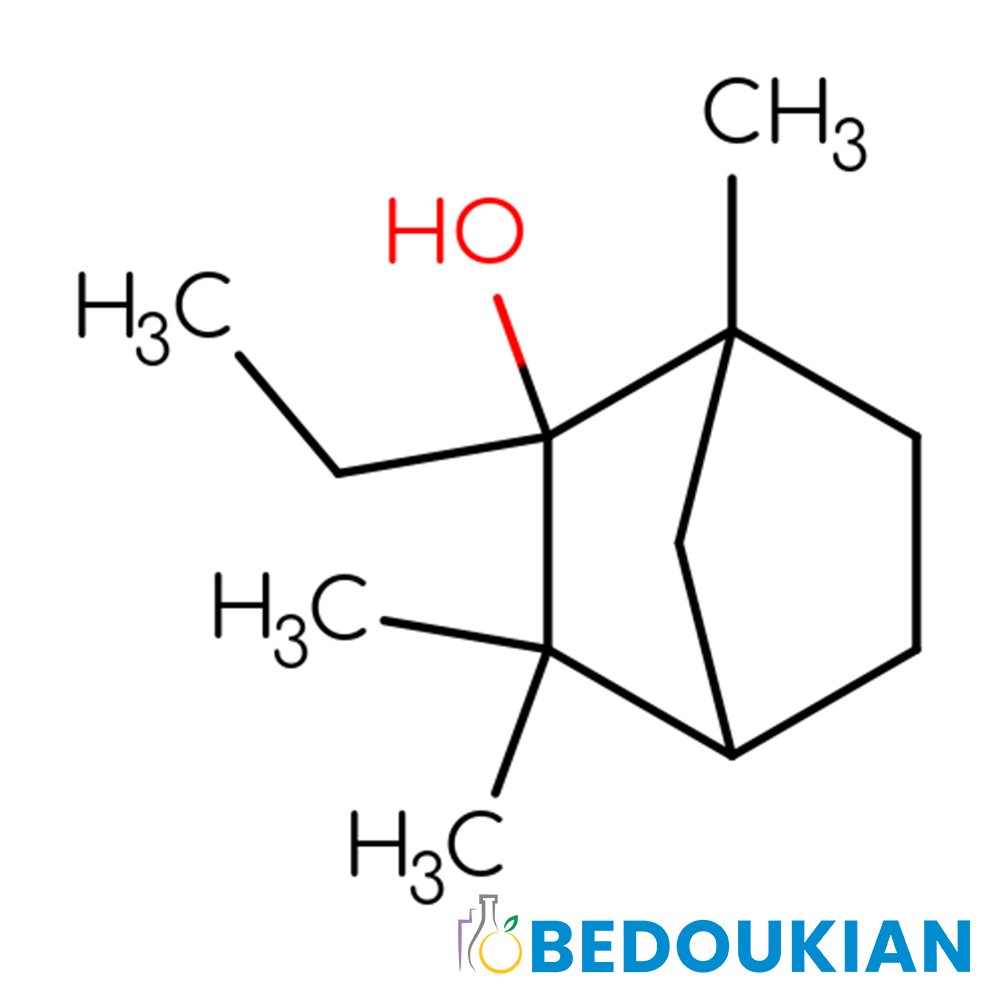Mousse Arbre Absolute (Treemoss Absolute) Technical Ingredient Overview
🏭 Manufacturer — IFF (International Flavors & Fragrances)
🔎 Chemical Name — Evernia furfuracea extract; Pseudevernia furfuracea extract
🧪 Synonyms — Tree moss extract, Treemoss absolute, Mousse d'arbre, Fir moss absolute, Pine moss extract
📂 CAS Number — 90028-67-4 (EINECS: 289-860-8); Alternative CAS: 68648-41-9 (TSCA)
📘 FEMA Number — Not applicable (not approved for flavor use)
⚖️ Molecular Weight — Not applicable (complex natural extract mixture)
📝 Odor Type — Woody, mossy, earthy
📈 Odor Strength — High to very high (varies by concentration and processing method)
👃🏼 Odor Profile — Intensely dry, woody, and earthy forest floor opening with pronounced leather and seaweed facets, evolving into complex phenolic-smoky nuances, finishing with warm tobacco, mushroomy-earthy undertones, and deep balsamic resins creating exceptional tenacity. Less refined and darker than oakmoss, with a more pronounced turpentine-like character.
⚗️ Uses — Base note fixative in fine fragrance, particularly essential for Chypre and Fougère compositions, masculine woody-leather fragrances, forest and undergrowth accords, tobacco notes, and functional perfumery applications
🧴 Appearance — Dark green to dark brown semi-solid to viscous liquid; petroleum ether extracts are typically more liquid and brownish-green, while benzene extracts are darker green and more viscous
What is Mousse Arbre Absolute?
Mousse Arbre Absolute, commonly known as Treemoss Absolute, is a natural aromatic extract obtained from lichens of the genus Pseudevernia, primarily Pseudevernia furfuracea (L.) Zopf (Parmeliaceae), formerly classified as Evernia furfuracea. Unlike oakmoss, which grows predominantly on oak trees, treemoss lichens are harvested from coniferous trees, particularly pines and firs, in the humid forests of central and southern Europe (Arctander, 1960).
Treemoss is a foliose lichen resulting from the symbiotic relationship between a fungus and an alga. The pale greenish-gray thallus, typically 3 to 8 cm in length, features a palmately branched structure with pointed tips. The upper surface is characteristically green and warty with pale gray reproductive bodies (soredia), while the undersurface displays a whitish coloration with a faint netlike pattern (Biolandes, 2022).
The commercial product is obtained through a two-stage extraction process: first, a concrete is produced by hydrocarbon solvent extraction (typically using petroleum ether, benzene, or cyclohexane mixtures), followed by alcohol extraction of the concrete to yield the absolute. The extraction yield from concrete to absolute is approximately 80%, with an overall extraction yield of about 3.5%—significantly higher than oakmoss at 1.5% (Arctander, 1960).
Historical Background
The use of treemoss in perfumery dates back to at least the 16th century, establishing it as one of the oldest natural raw materials in fragrance composition (Luminescents, 2021). The material gained particular prominence with the development of the Fougère fragrance family, initiated by Paul Parquet's creation of Fougère Royale for Houbigant in 1882, which revolutionized masculine perfumery.
Large-scale commercial harvesting and processing of treemoss developed significantly in France, particularly in the Grasse region, which became the center for moss extract production. By 1997, approximately 1,900 tons of treemoss were being processed annually in Grasse for the perfume industry (Wikipedia, 2025). The total quantities of oakmoss and treemoss collected annually in the Balkan countries, France, and Morocco exceeded 4,000 tons during peak production periods (Surburg & Panten, 2006).
Treemoss played a crucial role in creating some of the most iconic fragrances of the 20th century, including First(1976) by Van Cleef and Arpels, Coco (1984) by Chanel, and Polo Green (1978) by Ralph Lauren. These fragrances relied significantly on pure treemoss absolute for their distinctive character and longevity.
Historically, P. furfuracea was also used in ancient Egyptian embalming practices, where it was found packed into the body cavities of mummies, though it remains uncertain whether this was for preservative or aromatic properties (Wikipedia, 2025).
Olfactory Profile
Scent Family
Mossy-Woody: Classified within the earthy-mossy category with pronounced woody and leather facets
Main Descriptors
Primary notes: Intensely dry, woody, earthy, forest floor
Secondary notes: Pronounced leather, seaweed, phenolic-smoky; Tobacco, mushroomy-earthy, vanilla-like sweetness, balsamic resins
Distinctive characteristics: More turpentine-like and tar-like than oakmoss, with a darker, less refined character
The olfactory profile of treemoss absolute is distinctly different from its cousin oakmoss (Evernia prunastri). Where oakmoss presents delicate topnotes with fresh seashore-like character, treemoss lacks this refined freshness. Instead, it offers a more pronounced woody-tar character with substantial phenolic depth (Arctander, 1960).
Intensity
Very High: Treemoss absolute is exceptionally powerful, requiring minimal dosage in compositions. Commercial dilutions (typically 10-15% in isopropyl myristate or similar carriers) are common to improve handling and ensure precise dosing.
Tenacity
Exceptional: As a base note material with outstanding fixative properties, treemoss absolute demonstrates remarkable longevity, lasting well over 400 hours on a smelling strip. Its fixative qualities anchor more volatile components and extend the overall persistence of fragrance compositions.
Volatility
Base Note: Extremely low volatility due to high molecular weight constituents including depsides, depsidones, and resin acids. The material functions almost exclusively in the base and dry-down phases of fragrance development.
Chemical Composition
The olfactory character derives from a complex mixture of secondary metabolites:
Depsides: Including olivetoric acid, physodic acid, and various related compounds
Depsidones: Such as atranorin and physodic acid derivatives
Phenolic compounds: Resorcinol derivatives responsible for earthy-mossy character
Triterpenes and steroids: Contributing to fixative properties
Resin acids: Present in mixed lichen extracts, particularly cedar moss variants
The two naturally occurring chemotypes of P. furfuracea are distinguished by their secondary metabolite production: var. ceratea produces olivetoric acid and other physodic acids, while var. furfuracea produces physodic acid but not olivetoric acid (Joulain & Tabacchi, 2009).
Applications in Fine Fragrance
Treemoss absolute serves as an indispensable component in several classic fragrance families:
Chypre Compositions
In Chypre fragrances, treemoss provides the essential earthy-mossy foundation that defines this family, typically combined with bergamot, labdanum, and patchouli. While historically less prestigious than oakmoss in Chypre structures, treemoss offers comparable fixative properties with a drier, woodier character.
Fougère Structures
As a cornerstone of Fougère compositions since the late 19th century, treemoss combines with lavender, coumarin, and other aromatics to create the distinctive fresh-woody-mossy accord that characterizes this masculine fragrance family.
Masculine Fragrances
The pronounced leather, tobacco, and woody facets make treemoss particularly valuable in masculine woody-leather compositions, after-shaves, and colognes. Its less powdery effect compared to oakmoss provides drier, woodier facets ideal for men's fragrances (Biolandes, 2022).
Forest and Natural Accords
Treemoss excels in creating authentic forest floor notes and undergrowth accords, bringing natural complexity with its slightly animalic facets. It is particularly effective in fig reproductions and fruity notes requiring a natural, earthy grounding (Biolandes, 2022).
Pairing Behavior
Treemoss blends exceptionally well with:
Woody notes: Patchouli, vetiver, cedarwood, pine, cypress
Aromatic herbs: Lavender, clary sage, rosemary
Resins: Labdanum, benzoin, galbanum
Spices: Clove, cinnamon
Animalic notes: Leather accords, castoreum
Performance in Formula
Treemoss absolute demonstrates excellent solubility in alcohol-based formulations, though some wax residues may cause slight turbidity in certain applications. The material is stable in eau de toilette formulations and various functional bases when properly processed (Biolandes, 2022).
Typical Usage Concentration: 0.01-0.1% in finished consumer products (subject to IFRA restrictions)
Dilution Recommendations: Due to its extreme viscosity and high concentration, treemoss absolute is often supplied in diluted form (10-15% in carriers such as isopropyl myristate, triethyl citrate, or dipropylene glycol) to facilitate handling and precise dosing.
Formulation Notes:
Extremely viscous to semi-solid at room temperature; may require warming for handling
Dark coloration limits use in light-colored products
Acts as an excellent fixative, extending the longevity of top and middle notes
Provides depth and complexity with minimal dosage
Industrial & Technical Uses
Beyond fine fragrance, treemoss absolute finds application in:
Functional Perfumery: Industrial fragrances, soap perfumes, and air fresheners where cost-effective natural fixatives are desired
Personal Care Products: Men's grooming products, after-shaves, and beard care formulations
Home Fragrance: Candles and room sprays requiring natural forest and woody notes
Traditional Medicine: In certain cultures, particularly in Andalusia, Spain, P. furfuracea is used for respiratory complaints, prepared as a decoction (Wikipedia, 2025)
Biomonitoring: Due to its ability to bioaccumulate heavy metals, treemoss specimens are used as biomonitors for air quality assessment
Regulatory & Safety Overview
IFRA Status
Treemoss extracts (absolute, resinoid, concrete) are restricted under IFRA standards. As of Amendment 51, treemoss absolute is subject to specific limitations due to the presence of allergenic compounds atranol and chloroatranol.
Key Restrictions:
Maximum combined level of atranol and chloroatranol: 100 ppm each in treemoss extracts
Maximum use level in finished consumer products: 0.1% (when used alone or in combination with oakmoss)
IFRA-compliant treemoss absolutes are processed to reduce allergen levels below specified thresholds
IFRA Standard Reference: IFRA Standards Library
EU Cosmetics Regulation
Treemoss extract is regulated under Annex III, Entry 92 of EU Regulation 1223/2009:
Must be declared on cosmetic product labels when present above certain concentrations
Subject to maximum concentration limits in finished products
Atranol and chloroatranol are prohibited in cosmetic products under Amendment 2017/1410, though IFRA-compliant treemoss with reduced allergen levels below 100 ppm total is considered acceptable
Allergen Declaration Requirements
According to EU Cosmetics Regulation, treemoss extract must be labeled as EVERNIA FURFURACEA EXTRACTwhen present at concentrations:
≥0.001% in leave-on products
≥0.01% in rinse-off products
Toxicology
The primary safety concerns with treemoss absolute relate to contact sensitization potential. The Scientific Committee on Consumer Safety (SCCS) identified atranol and chloroatranol as the principal allergens responsible for sensitization reactions (SCCP, 2006).
Key Safety Data:
Treemoss absolute demonstrated positive results in Local Lymph Node Assay (LLNA) studies
Reduction of atranol and chloroatranol to <100 ppm significantly reduces allergenic potential
Contact allergy prevalence is lower than oakmoss but requires appropriate formulation practices
No acute toxicity concerns at recommended use levels
Handling Precautions:
Avoid skin contact with undiluted material
Not recommended during pregnancy
Keep away from children and pets
Use in well-ventilated areas
Manufacturing and Quality Considerations
Extraction Process
The production of treemoss absolute involves multiple stages:
Harvesting: Manual collection from coniferous trees in central and southern Europe (France, Italy, Spain, Morocco, Yugoslavia, Hungary, Czechoslovakia)
Pre-treatment: Lichens are often soaked in lukewarm water for 24 hours prior to extraction to facilitate the process, though this changes extract quality
Concrete Production: Extraction with hydrocarbon solvents (petroleum ether, benzene, or cyclohexane/isopropanol mixtures) in three successive washings
Absolute Production: Alcohol washing of concrete removes waxes, yielding the absolute
Allergen Reduction: Additional processing steps to reduce atranol and chloroatranol levels for IFRA compliance
Quality Variations
Treemoss quality varies significantly based on:
Source location: Geographic origin affects chemical composition
Lichen species mix: Pure P. furfuracea vs. mixtures with Usnea barbata (cedar moss variants)
Extraction method: Cold vs. hot extraction; solvent selection
Processing technique: Level of allergen reduction treatment
Adulteration and Authentication
Common adulterants include:
Seaweed extracts (Fucus species)
Synthetic moss-like compounds (e.g., Evernyl®, Veramoss®)
Lower-quality lichen extracts from other species
Dilution with high-boiling solvents without declaration
Synthetic Alternatives
Due to regulatory constraints, several synthetic alternatives have been developed:
Evernyl® (Methyl 2,4-dihydroxy-3,6-dimethylbenzoate): Provides clean mossy notes without restrictions
Veramoss®: Synthetic moss accord for Chypre and Fougère compositions
Various proprietary captive molecules: Developed by major fragrance houses
References
Arctander, S. (1960). Perfume and flavor materials of natural origin. Elizabeth, NJ: Arctander.
Biolandes. (2022). Treemoss product information. Retrieved from https://www.biolandes.com/en/product/treemoss/
Joulain, D., & Tabacchi, R. (2009). Lichen extracts as raw materials in perfumery. Part 2: Treemoss. Flavour and Fragrance Journal, 24(3), 105-116. https://doi.org/10.1002/ffj.1916
Luminescents. (2021). Treemoss absolute oil product information. Retrieved from https://www.luminescents.net/
Scientific Committee on Consumer Products (SCCP). (2006). Opinion on oakmoss and treemoss (SCCP/0131/06). European Commission.
Singh, G., Armaleo, D., Dal Grande, F., & Schmitt, I. (2021). Depside and depsidone synthesis in lichenized fungi comes into focus through a genome-wide comparison of the olivetoric acid and physodic acid chemotypes of Pseudevernia furfuracea. Biomolecules, 11(10), 1445. https://doi.org/10.3390/biom11101445
Surburg, H., & Panten, J. (2006). Common fragrance and flavor materials: Preparation, properties and uses (5th ed.). Weinheim: Wiley-VCH.
Wikipedia. (2025). Pseudevernia furfuracea. Retrieved from https://en.wikipedia.org/wiki/Pseudevernia_furfuracea

